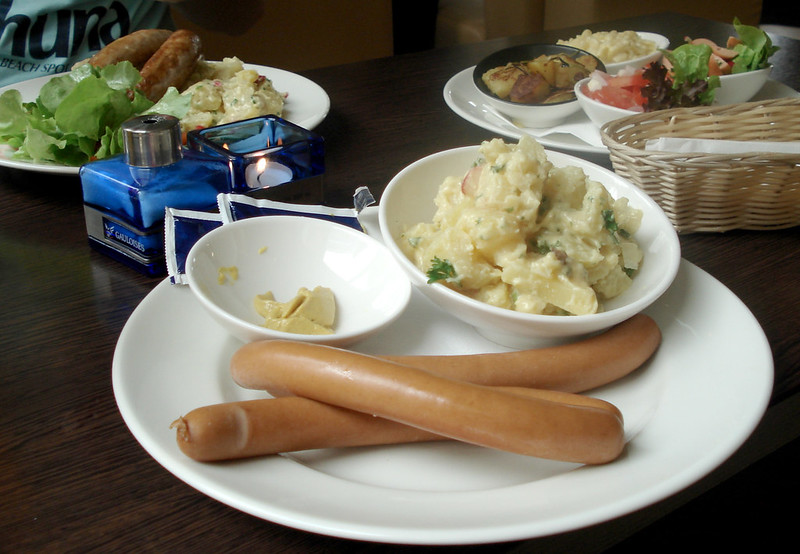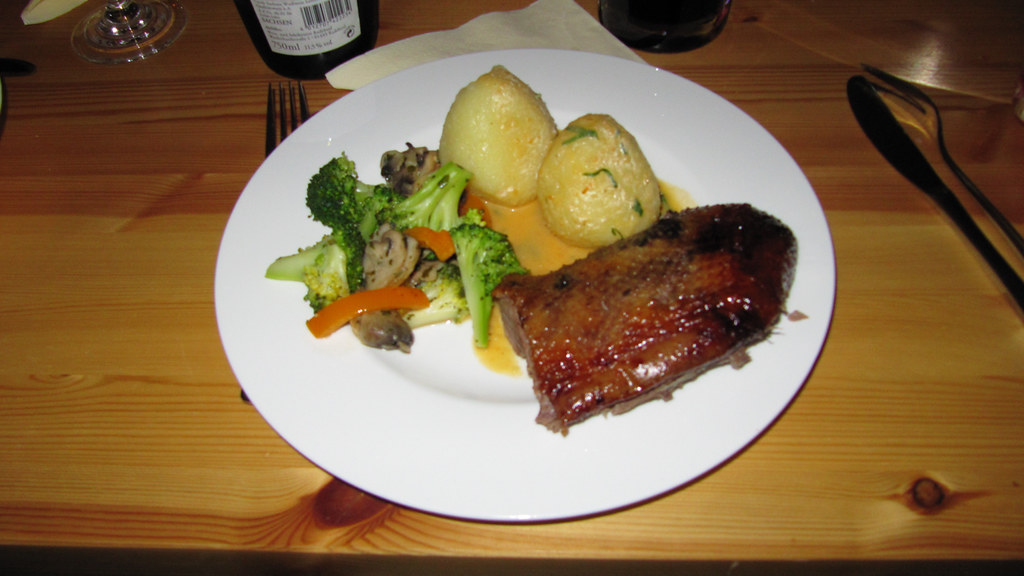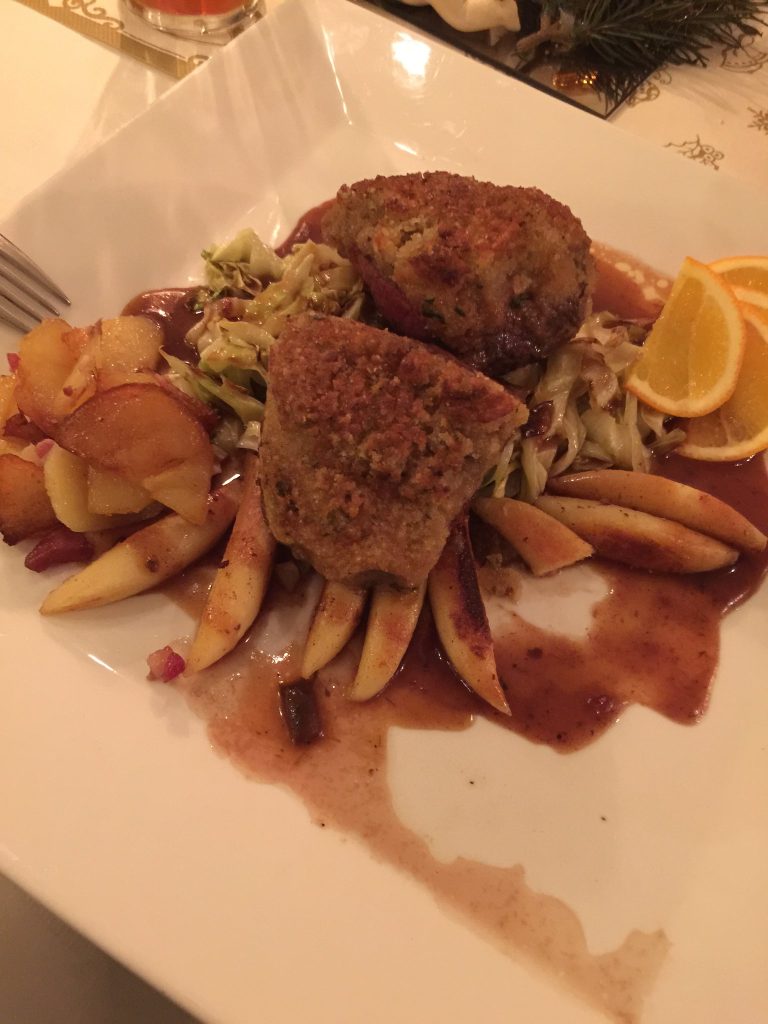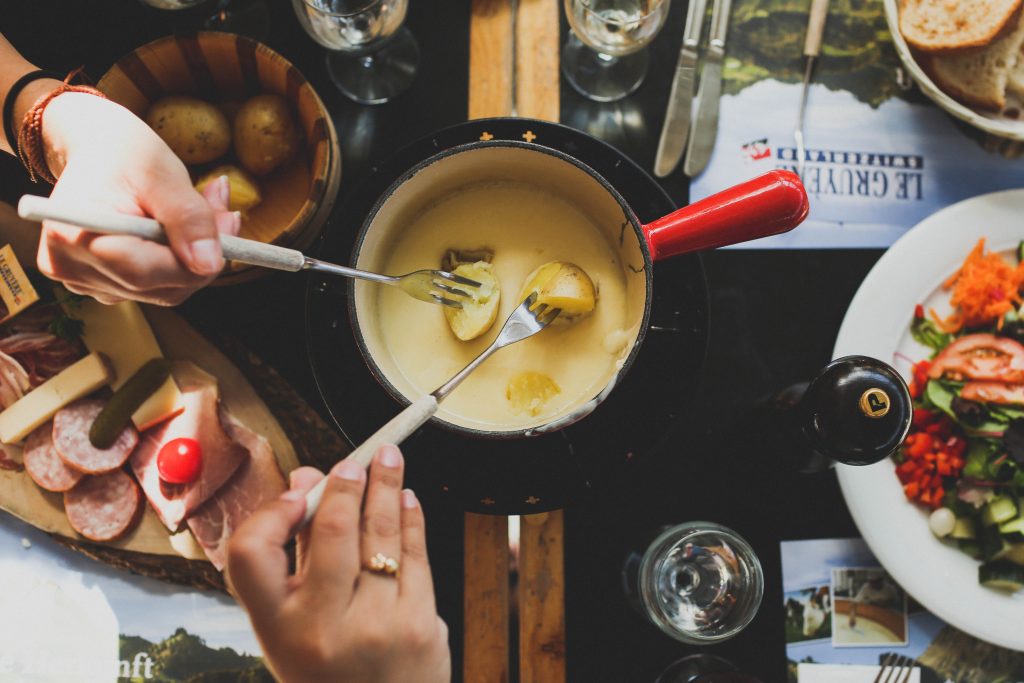What’s for Dinner with German Christmas? Posted by Sten on Dec 29, 2019 in Culture, Food, Holidays, Language, Traditions
German Christmas has a lot of interesting traditions. But when it comes to Essen… We are just not that traditional about it, it seems! Where other cultures have traditional Christmas dishes, like the French bûche de Noël or Venezuelan hallacas, the Germans don’t. While we make dozens and dozens of Weihnachtsplätzchen (Christmas cookies) and other sweets to cover the entire festive season, there is no grand dish that quite encapsulates “Christmas”! So what do Germans eat for Christmas dinner? Let’s find out!
The Top 5 German Christmas Dinner Dishes!
First of all, Germans tend to not have their main dinner on the 25th, but on the 24th, which is known as Heiligabend (holy evening). It’s when Christmas presents are unwrapped, too, usually after dinner.
According to an Umfrage (survey), Kartoffelsalat mit Würstchen (potato salad with sausage) is the most eaten Christmas dinner in Germany. Yes, really! That simple! The Kartoffelsalat is often already made the night before on the 23rd, so that it tastes even better on the night itself. The Würstchen are simply warmed up on the night itself.
But a lot of people also make it more complex! On number two is Weihnachtsgeflügel (Christmas poultry), such as a Weihnachtsgans (Christmas goose) or Entenbraten (duck roast). Though it is a lot of effort and requires some skill to get right. It may be served with anything, like Reis (rice) or Kartoffeln (potatoes).
Coming in third is an easier dish that does not require somebody to constantly be in the kitchen – Raclette (raclette). With its little pans and large variety of ingredients to cook, the French mealtime is a gemütliches (cosy) meal. It also tends to take a lot longer than a regular dinner, considering the cooking of each little pan takes a while, too. So that’s also nice for a Weihnachtsessen, where you can relax and catch up with your family and friends!
The fourth-most liked dish is another German classic: Schwein (pork)! Whether it’s a Schweineschnitzel (pork schnitzel) or a Schweinebraten (pork roast), Schwein is a popular German meat. While it also takes quite some time, it is a lot easier to prepare than the Geflügel.
And finally, there is Fondue (fondue). Like Raclette, this Swiss dish is a gemütliche way of celebrating Christmas dinner. Sitting together around a pan, while dipping forks equipped with various ingredients in hot cheese or oil makes good conversation happen!
As you can tell from these favorite dishes, the Germans don’t have very strong traditions themselves. Two out of these top 5 dishes are from a different country, so it shows the Germans are not very strict and traditional when it comes to their Christmas dinner. But what matters to them is that it is gemütlich and allows to catch up with family! With Würstchen and Kartoffelsalat at the top, the idea seems to be: Less work in the kitchen, more time sitting together at the table and enjoying the Gemeinsamkeit (togetherness).

Build vocabulary, practice pronunciation, and more with Transparent Language Online. Available anytime, anywhere, on any device.








